 Back to Exhibitions
Back to Exhibitions
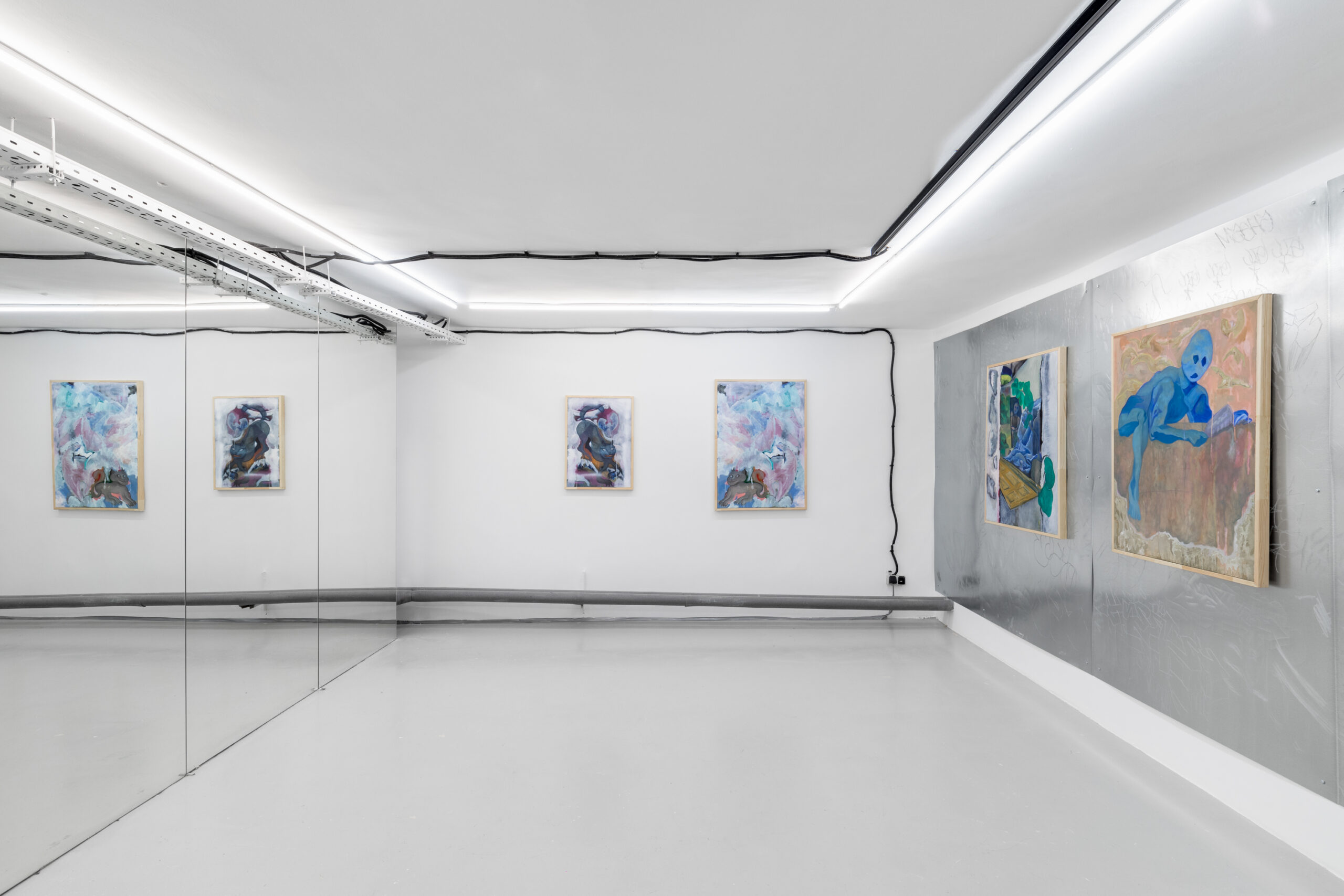
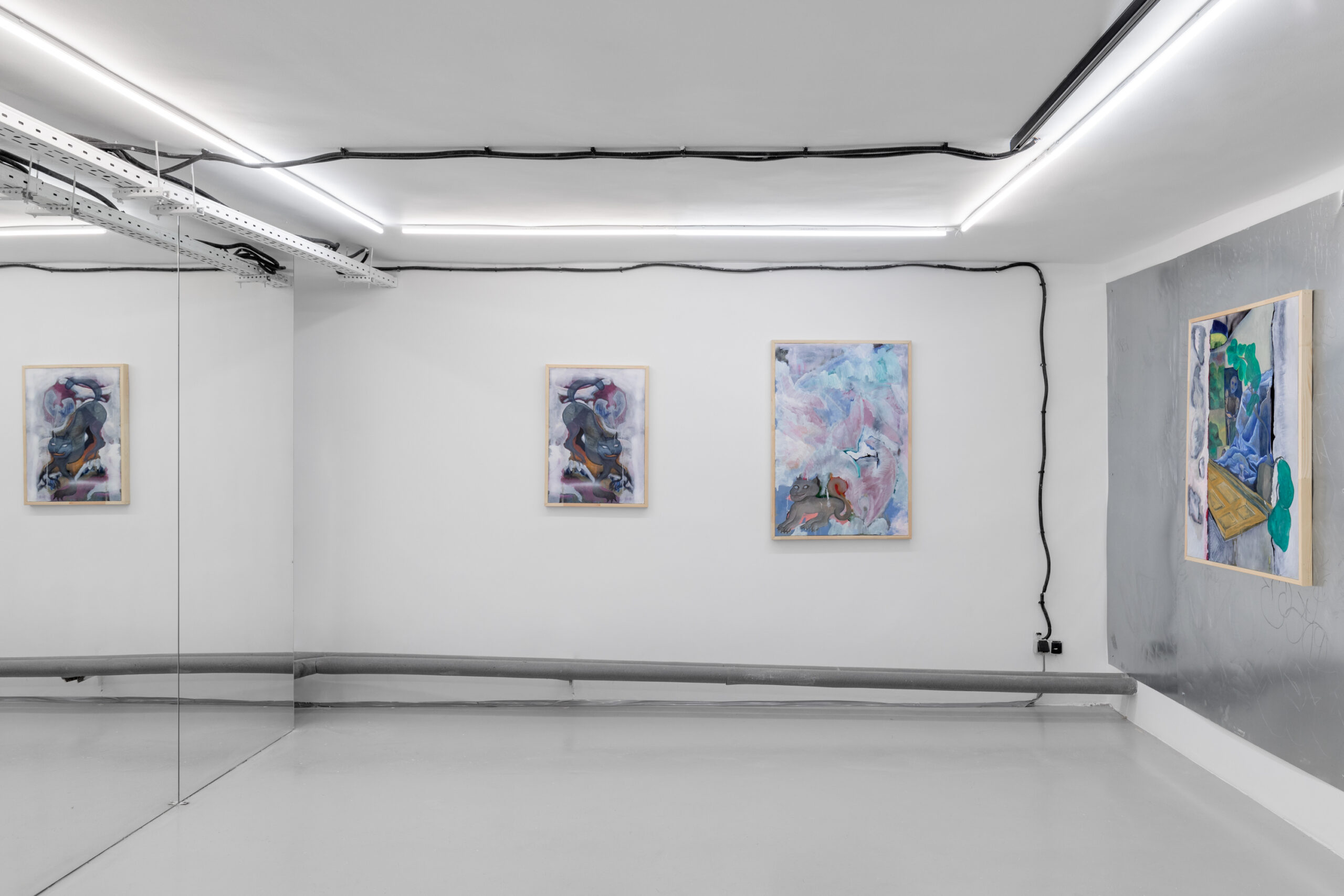
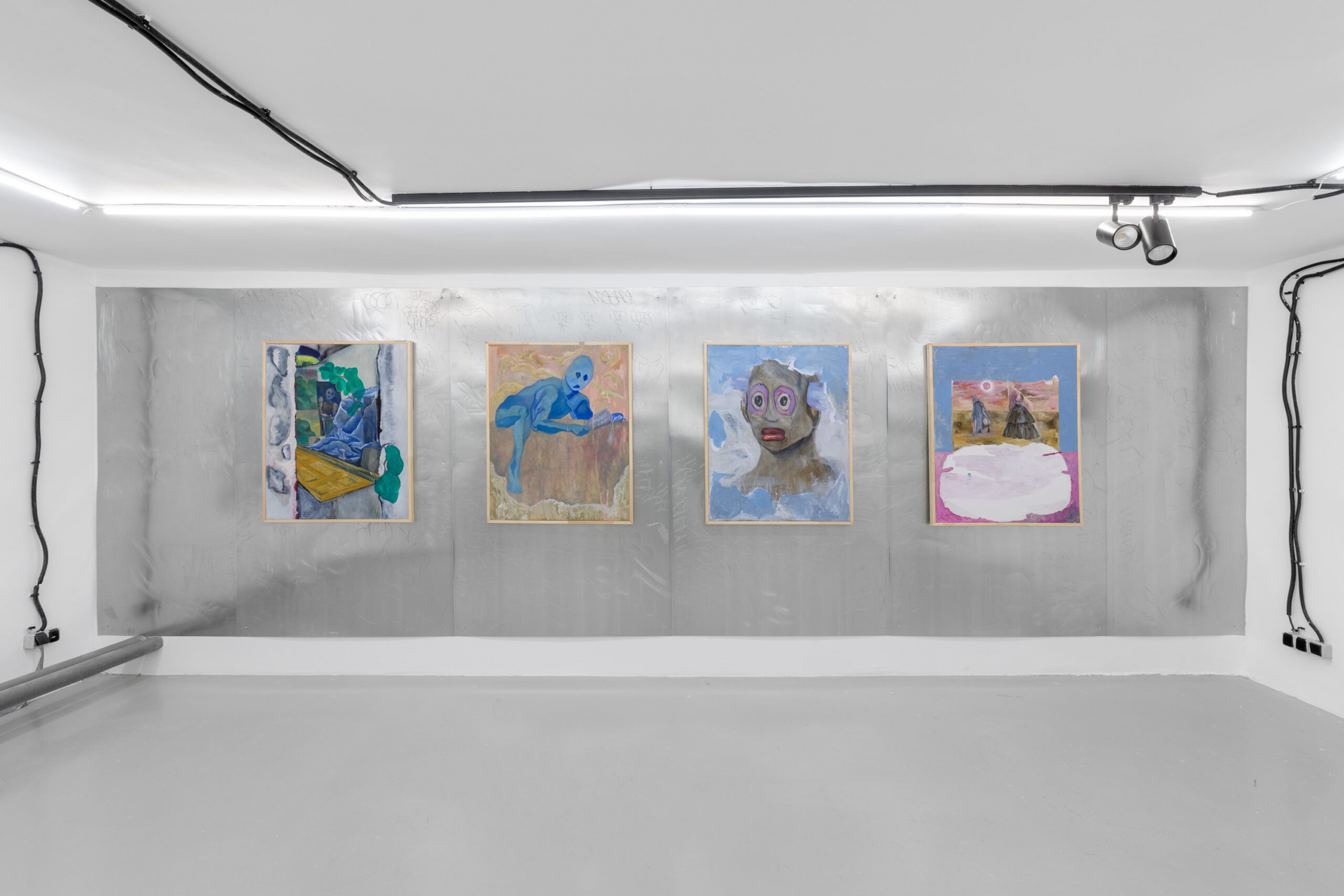
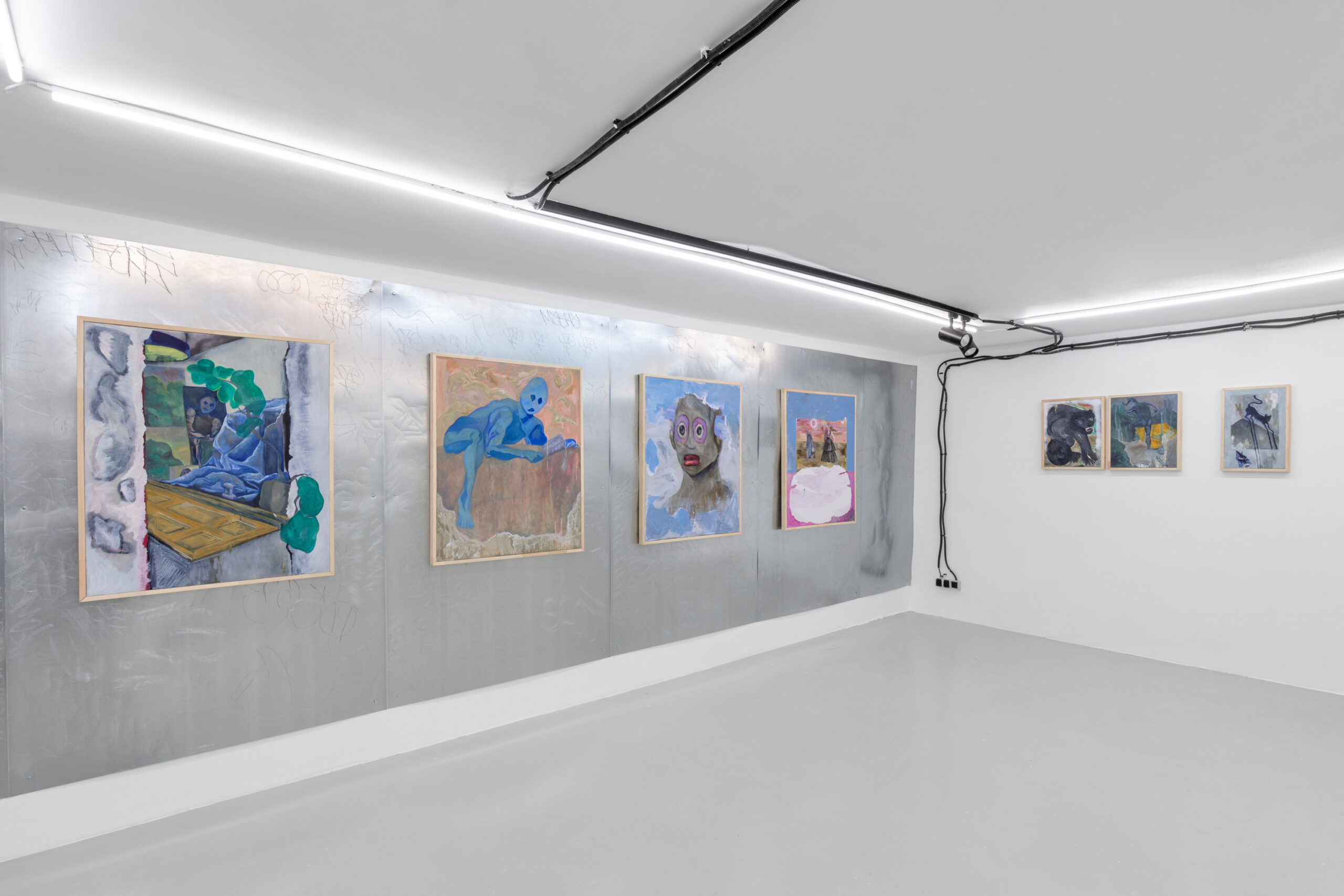
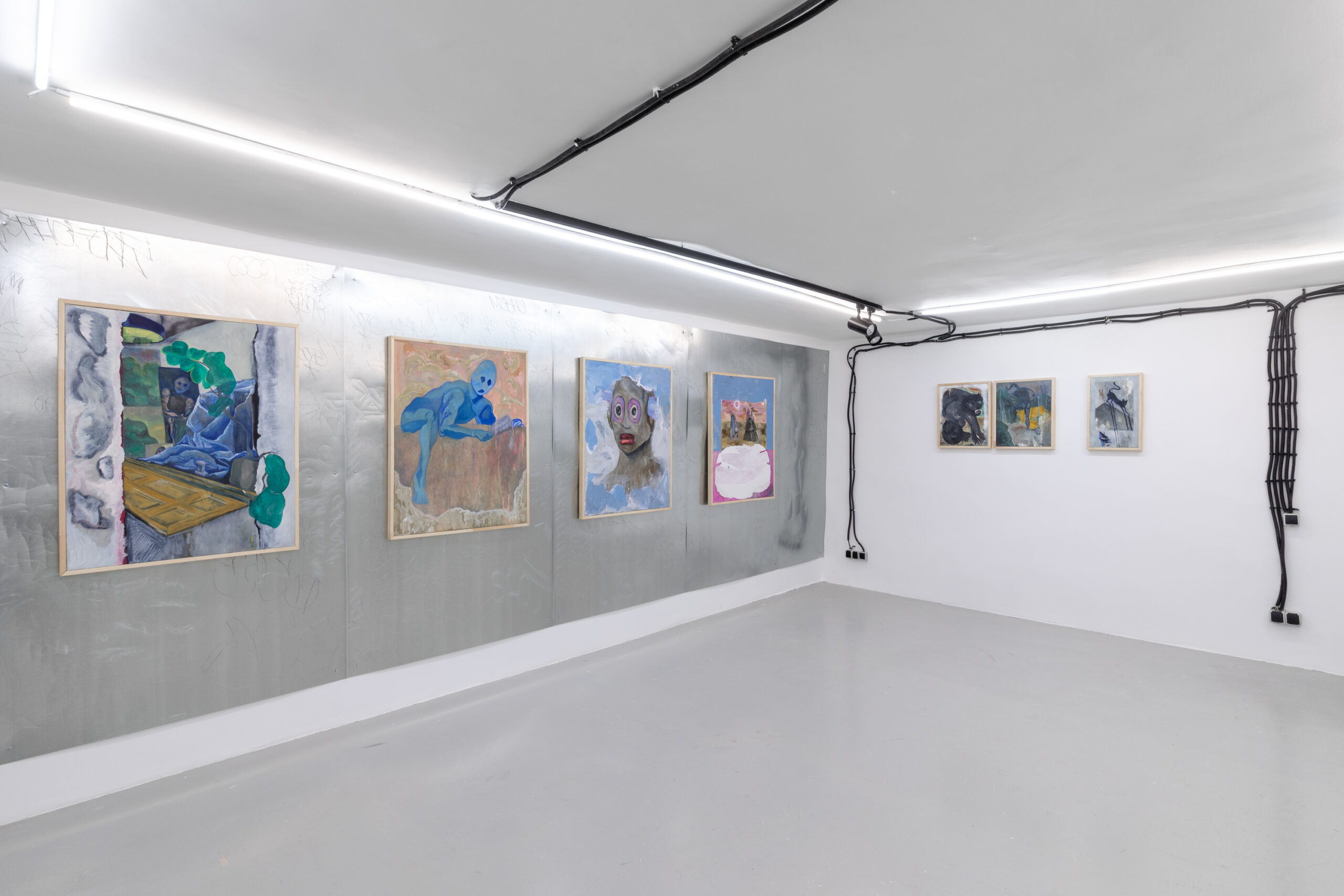
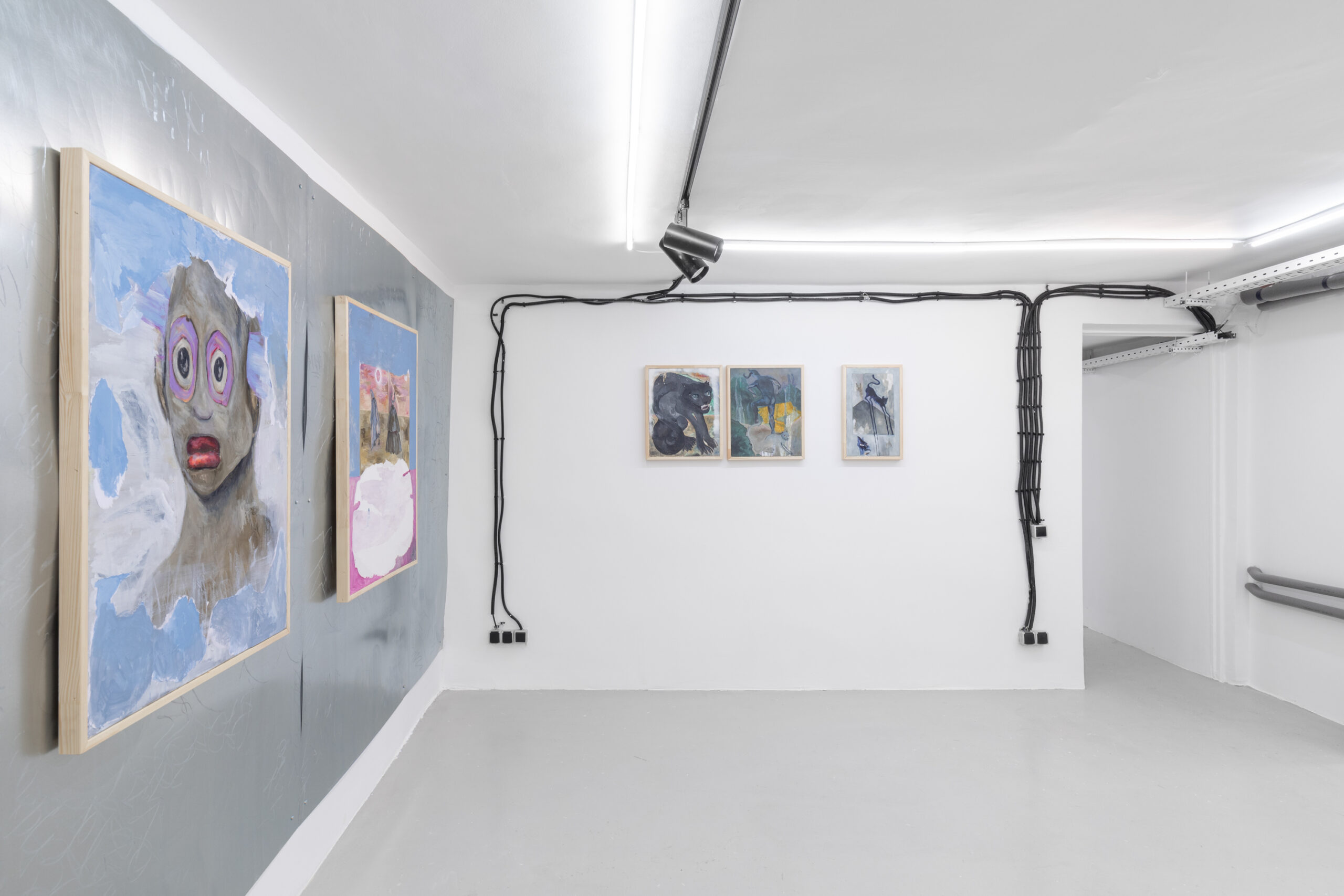
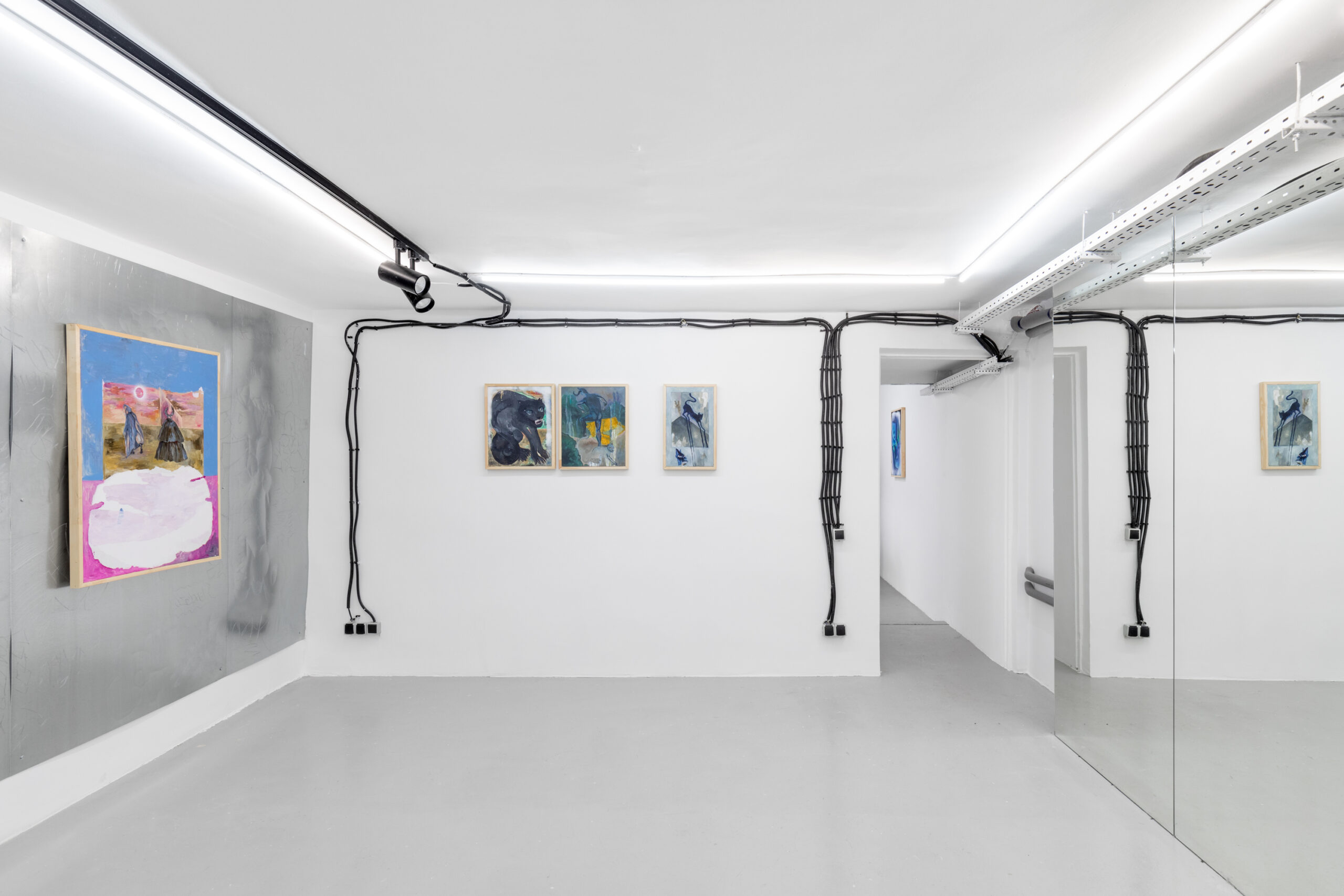
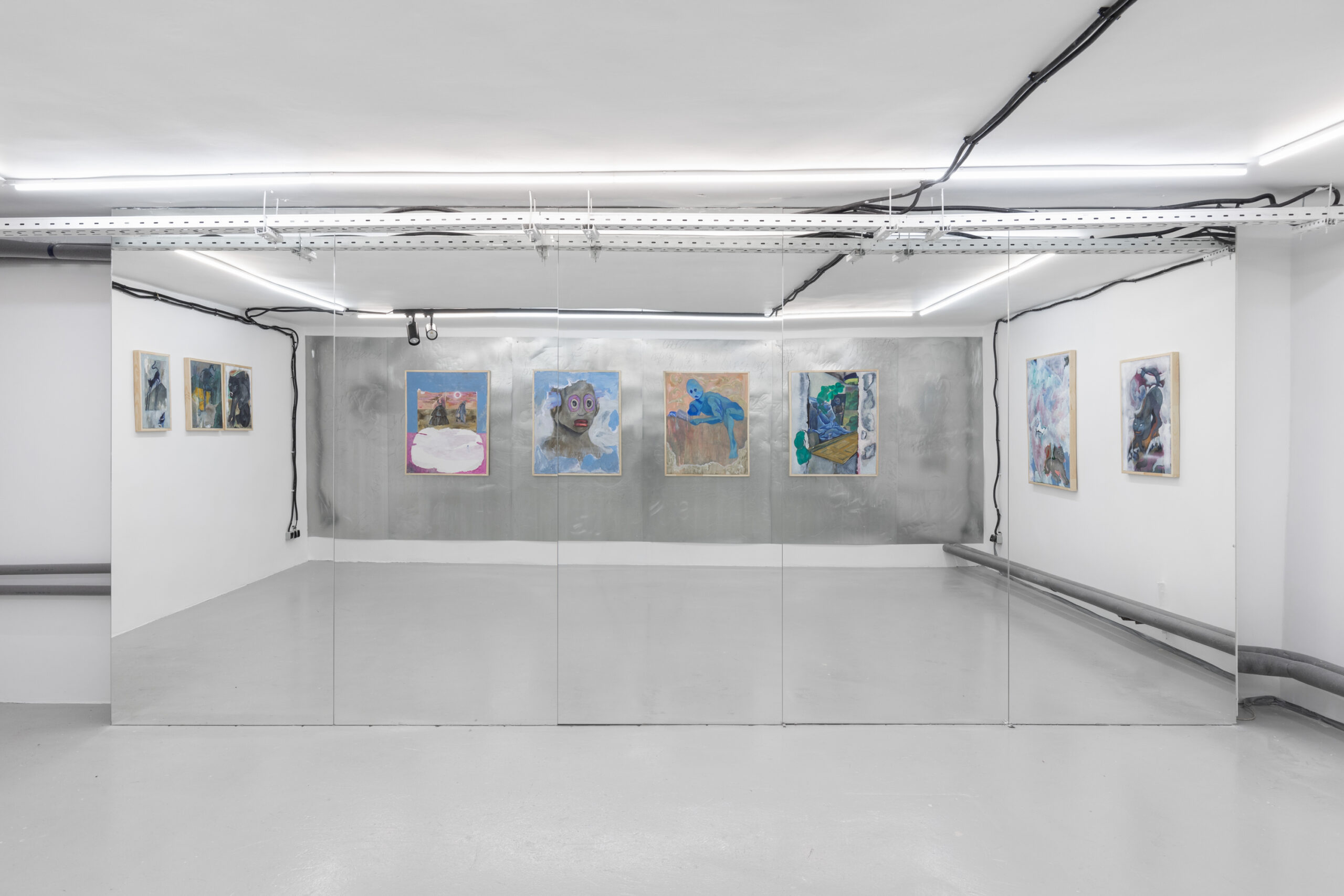
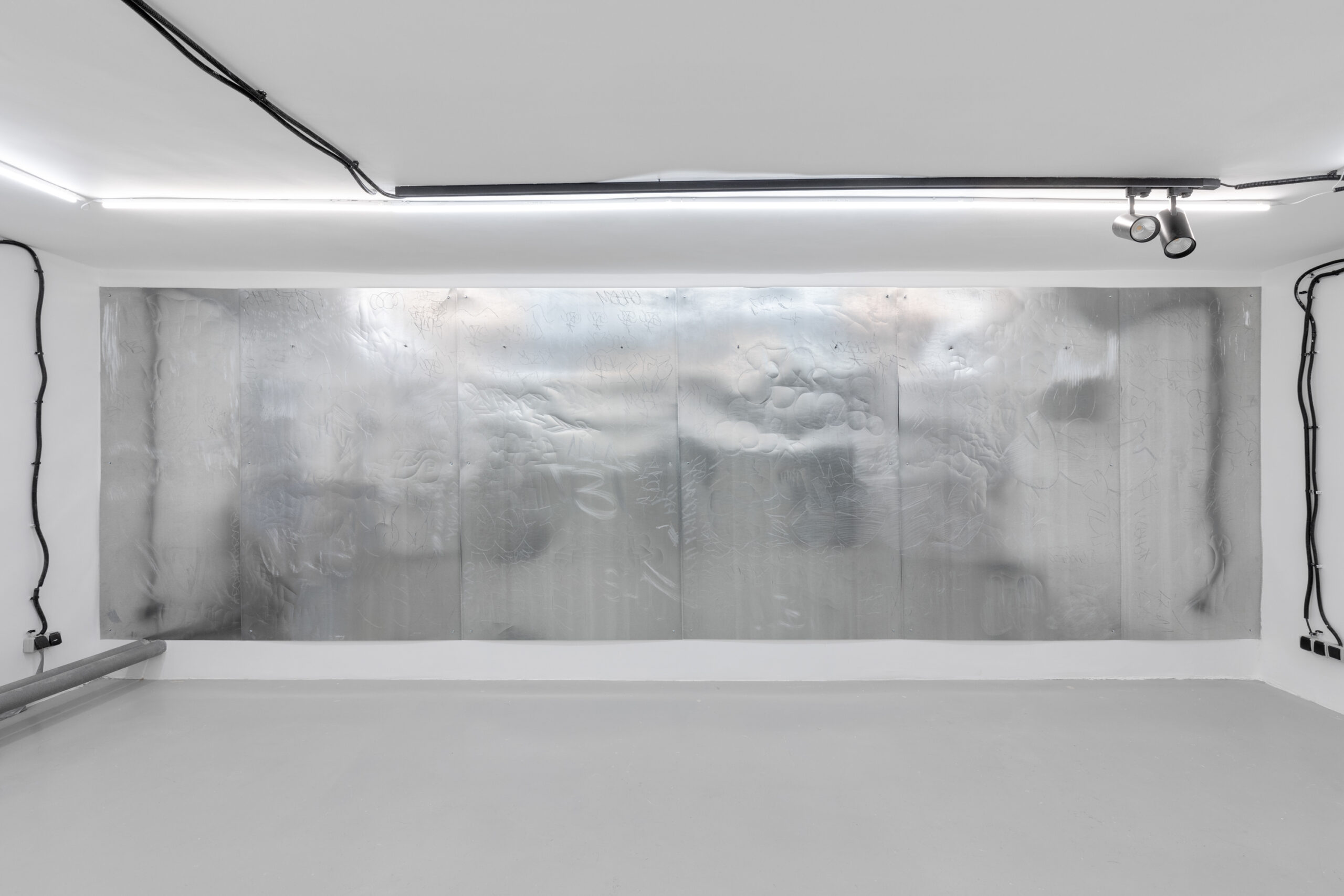
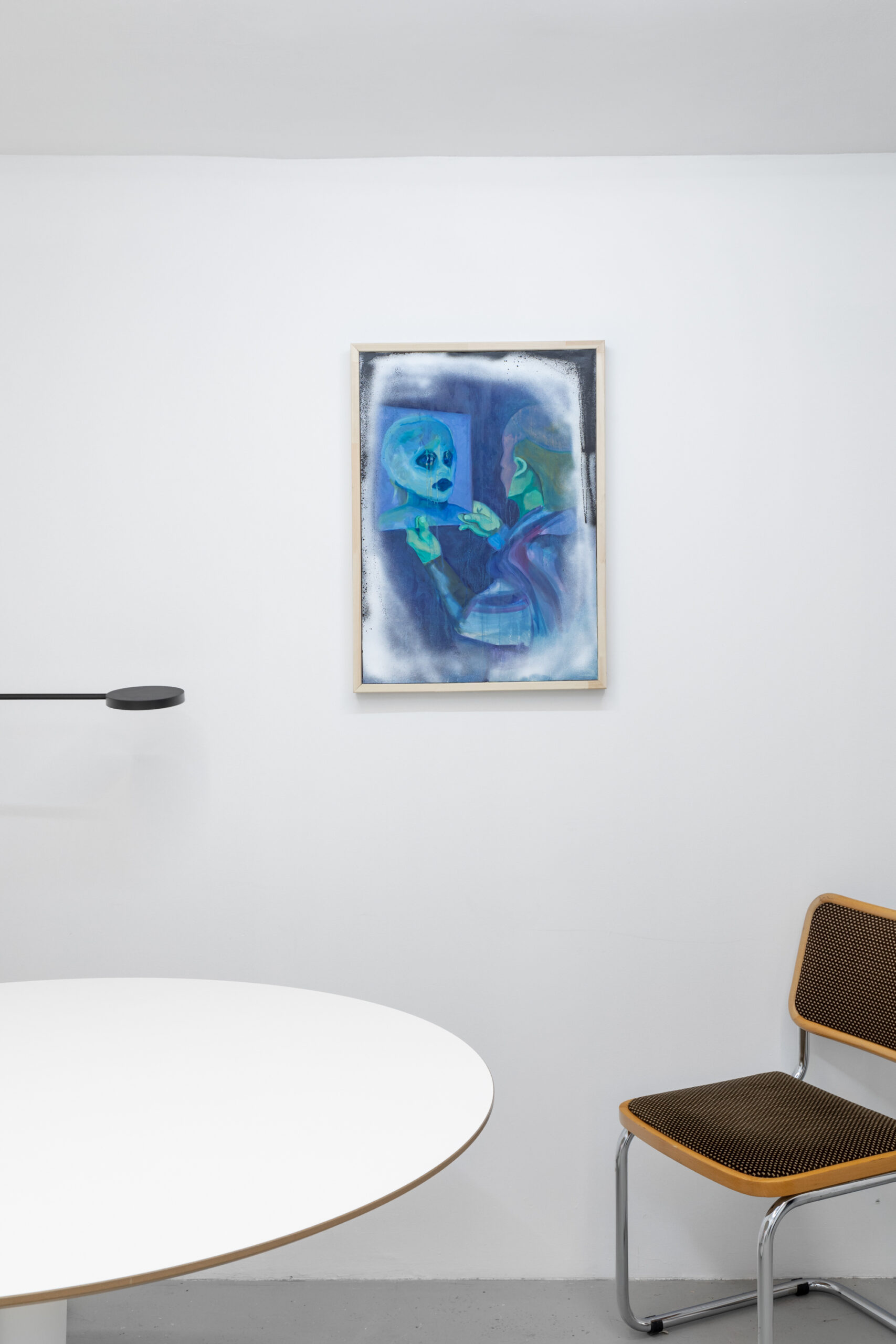
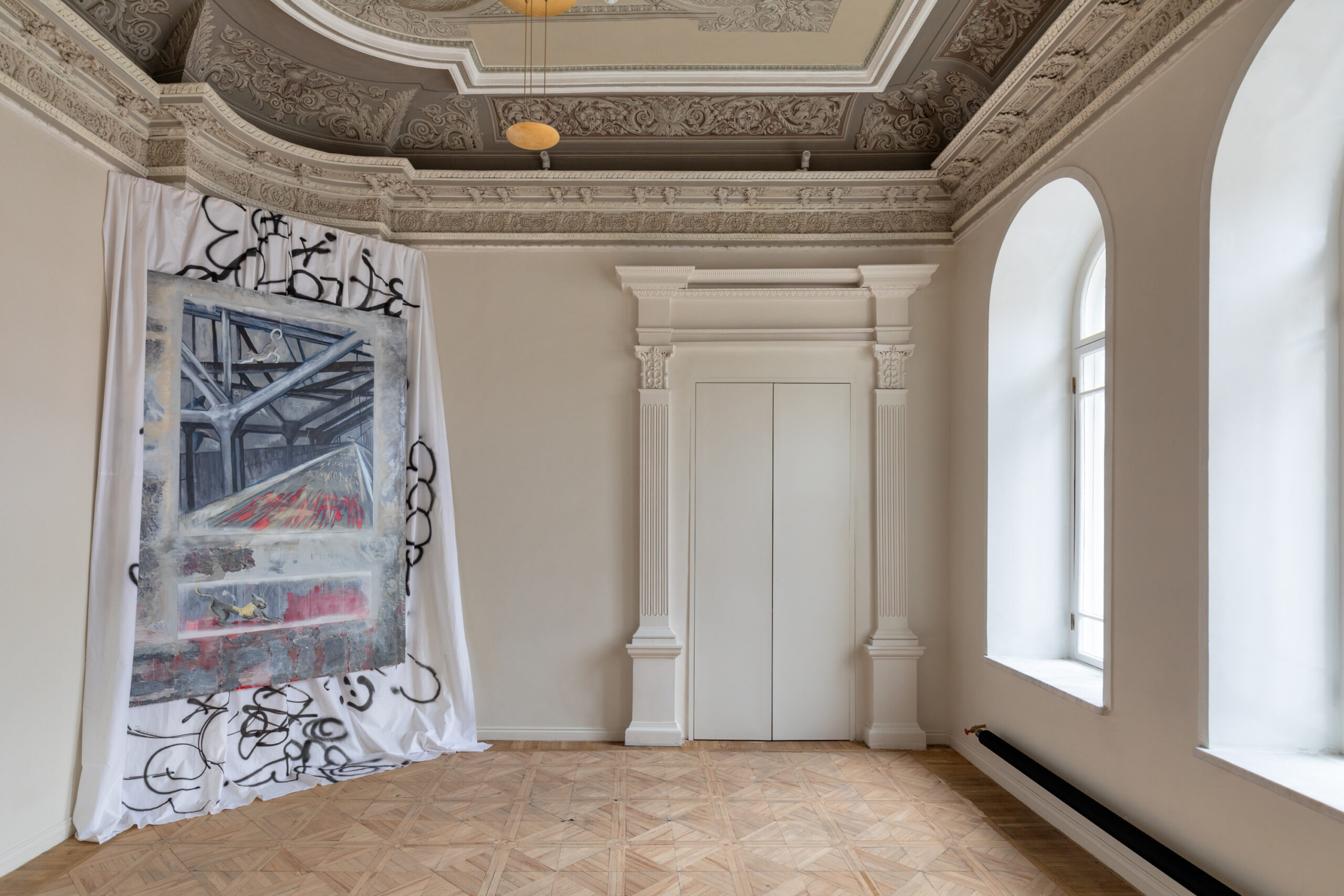
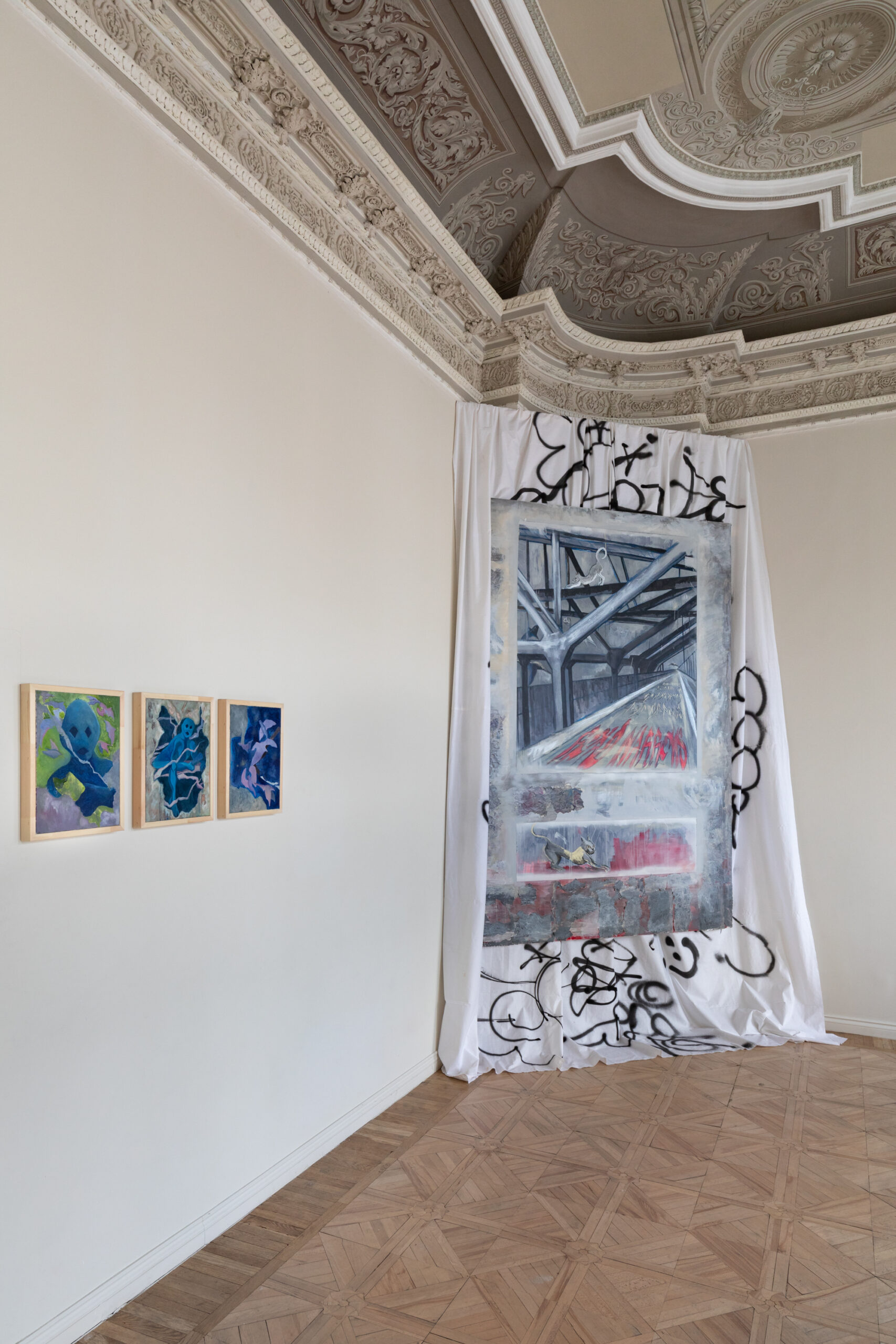
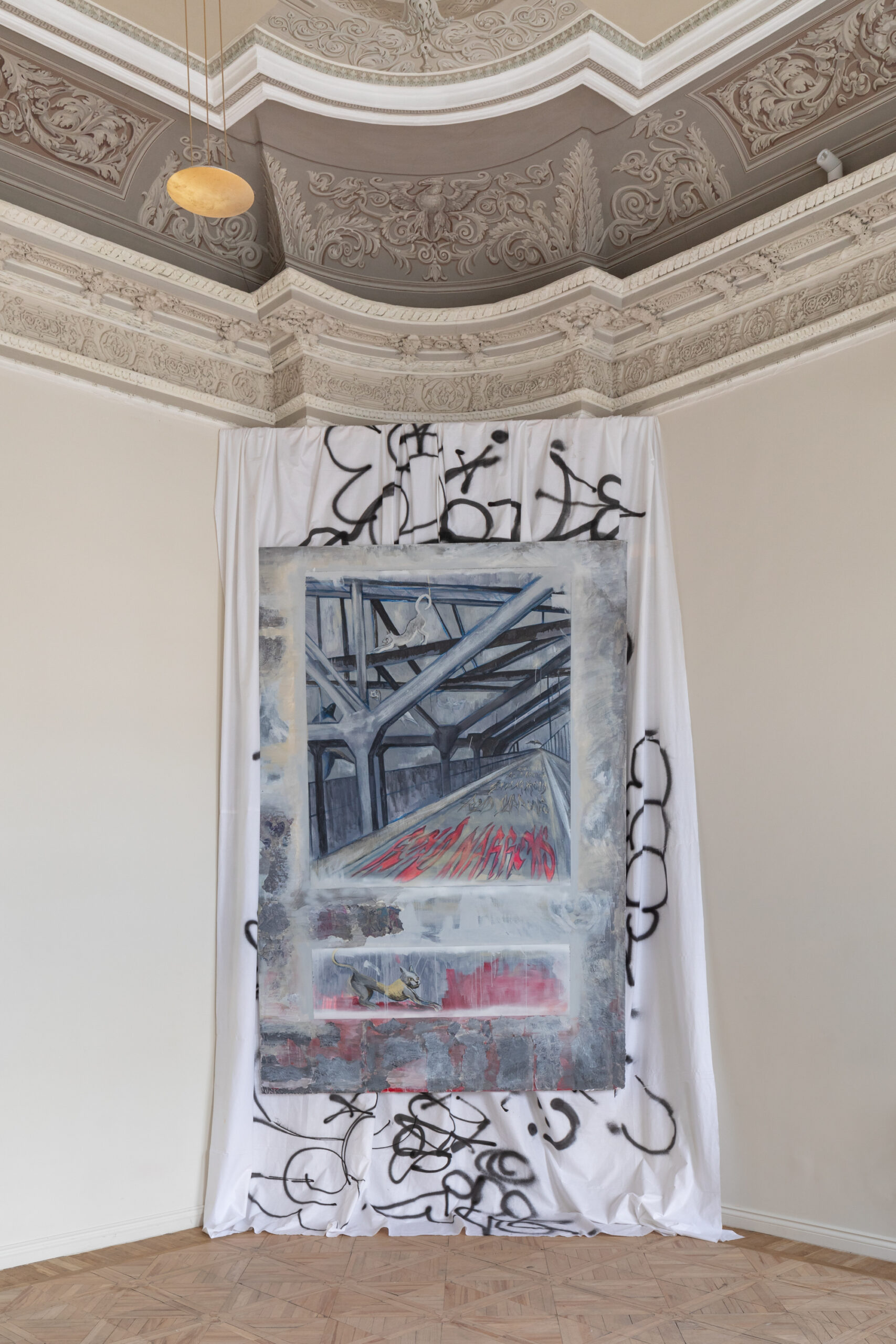
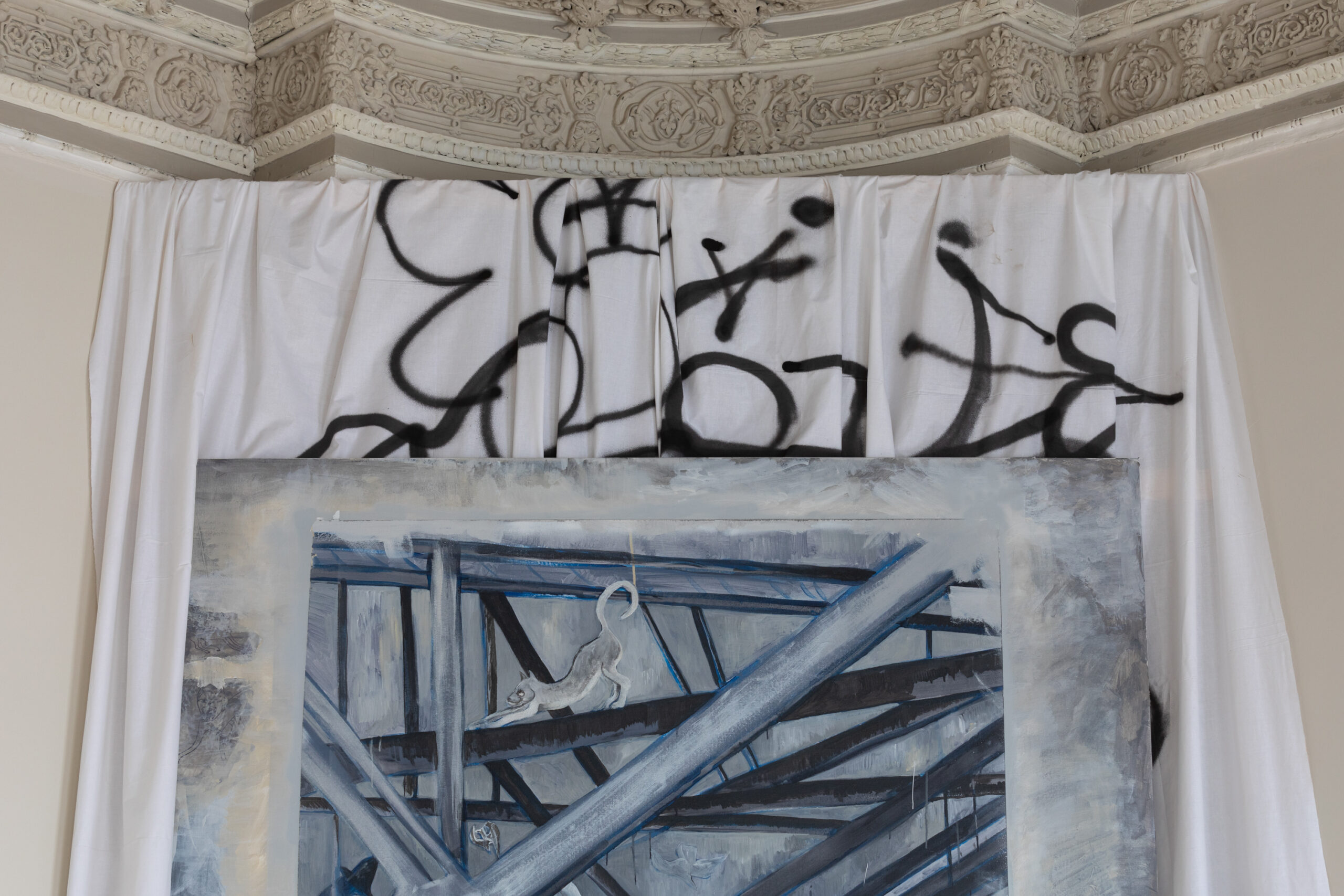
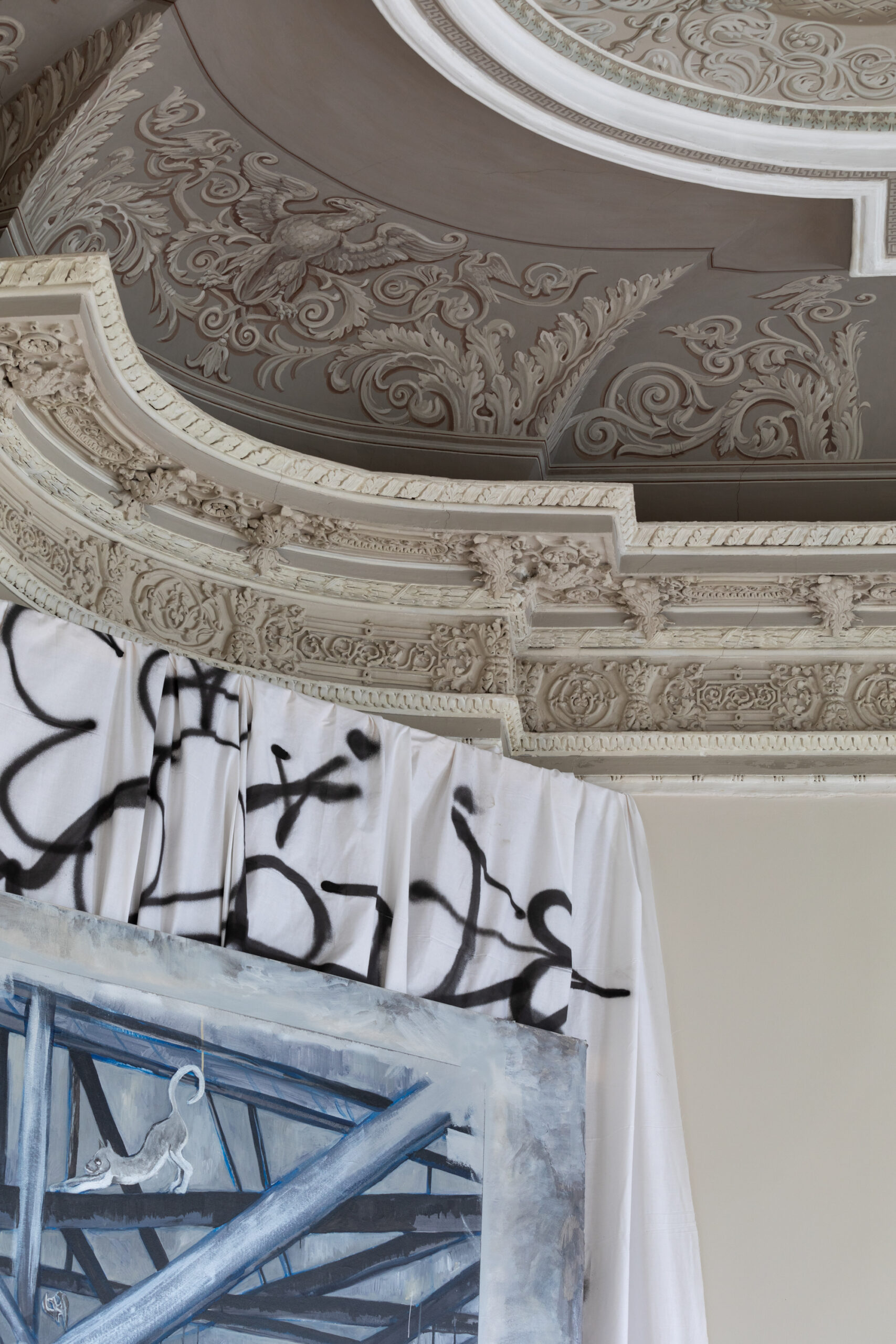
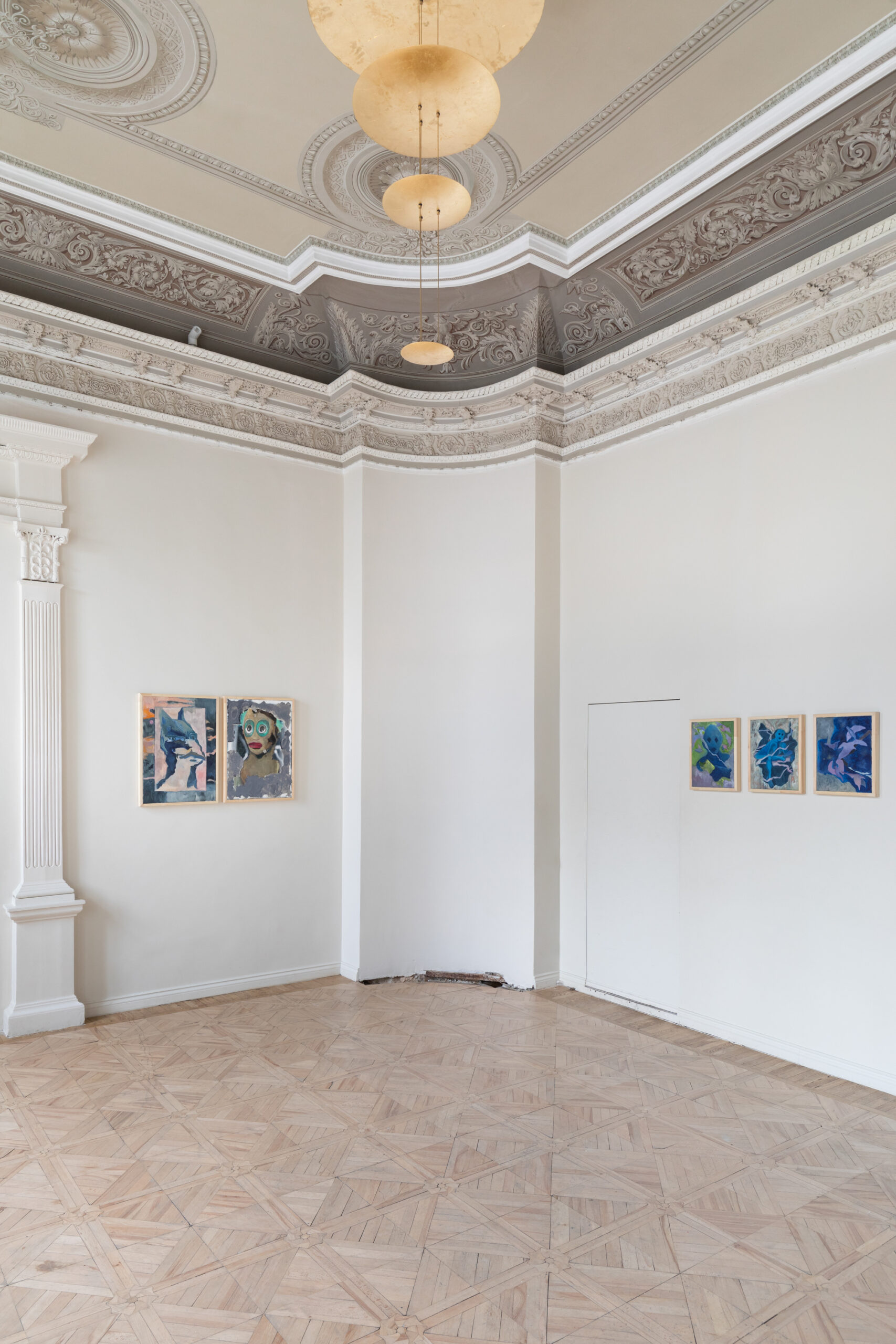
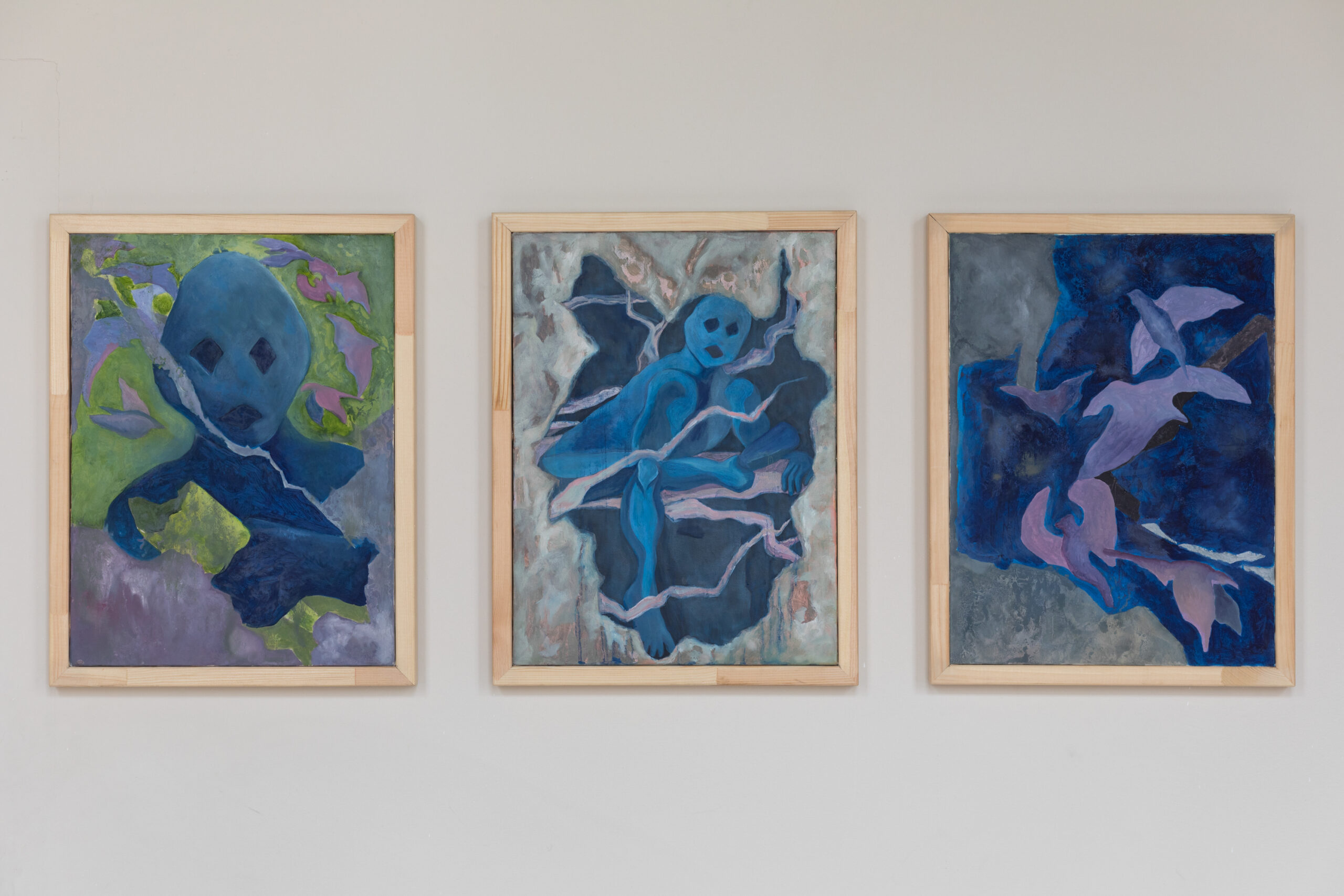
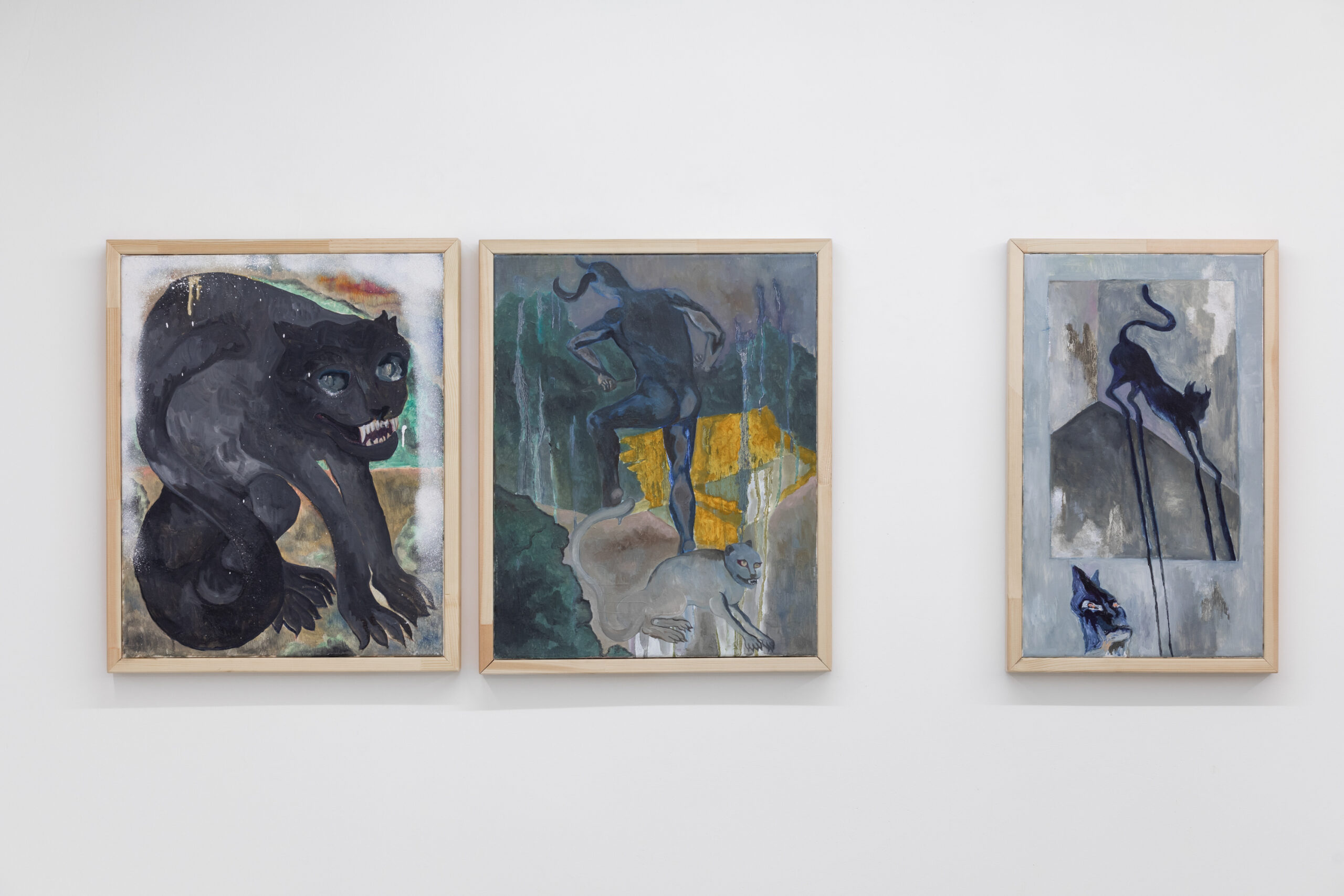
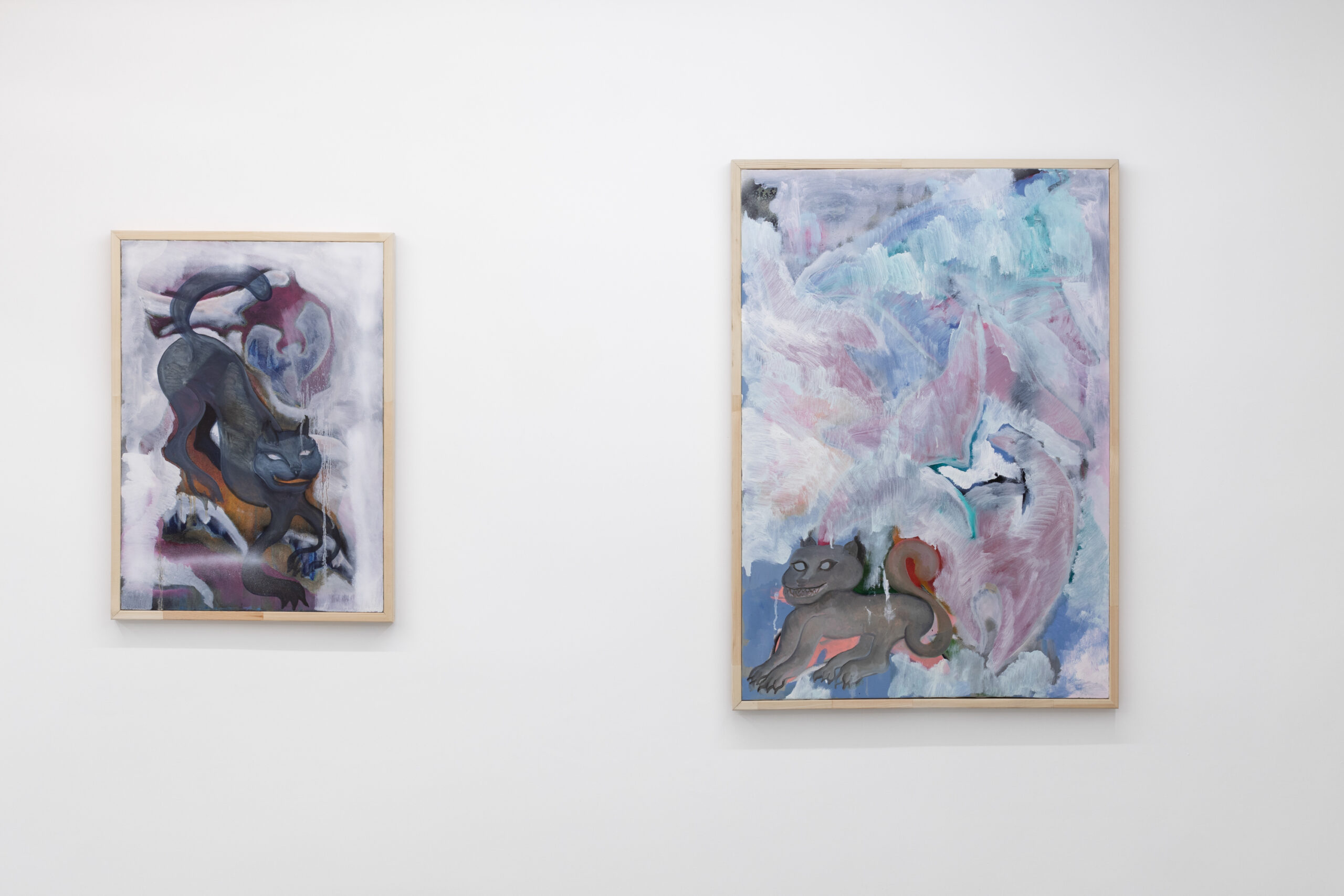
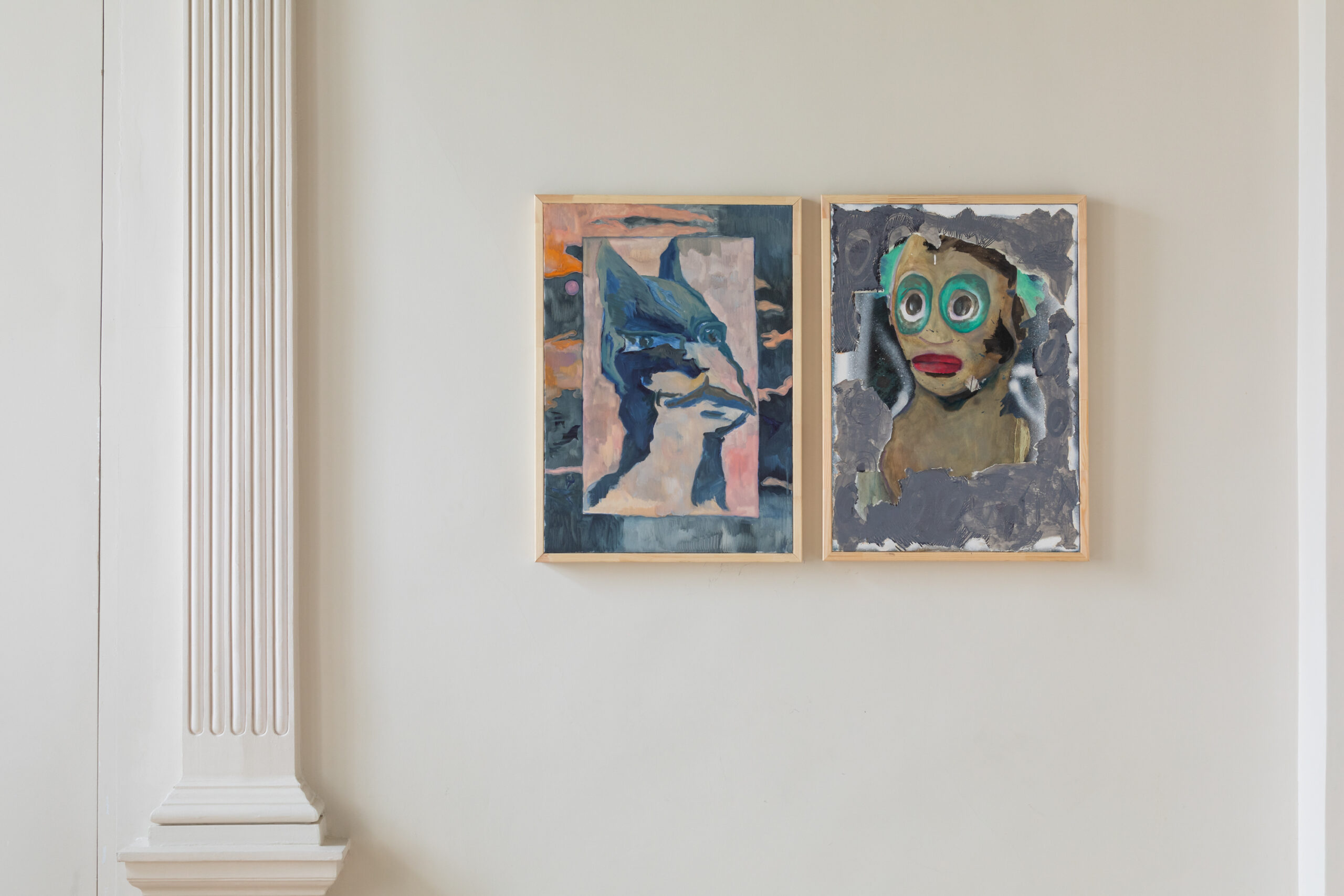
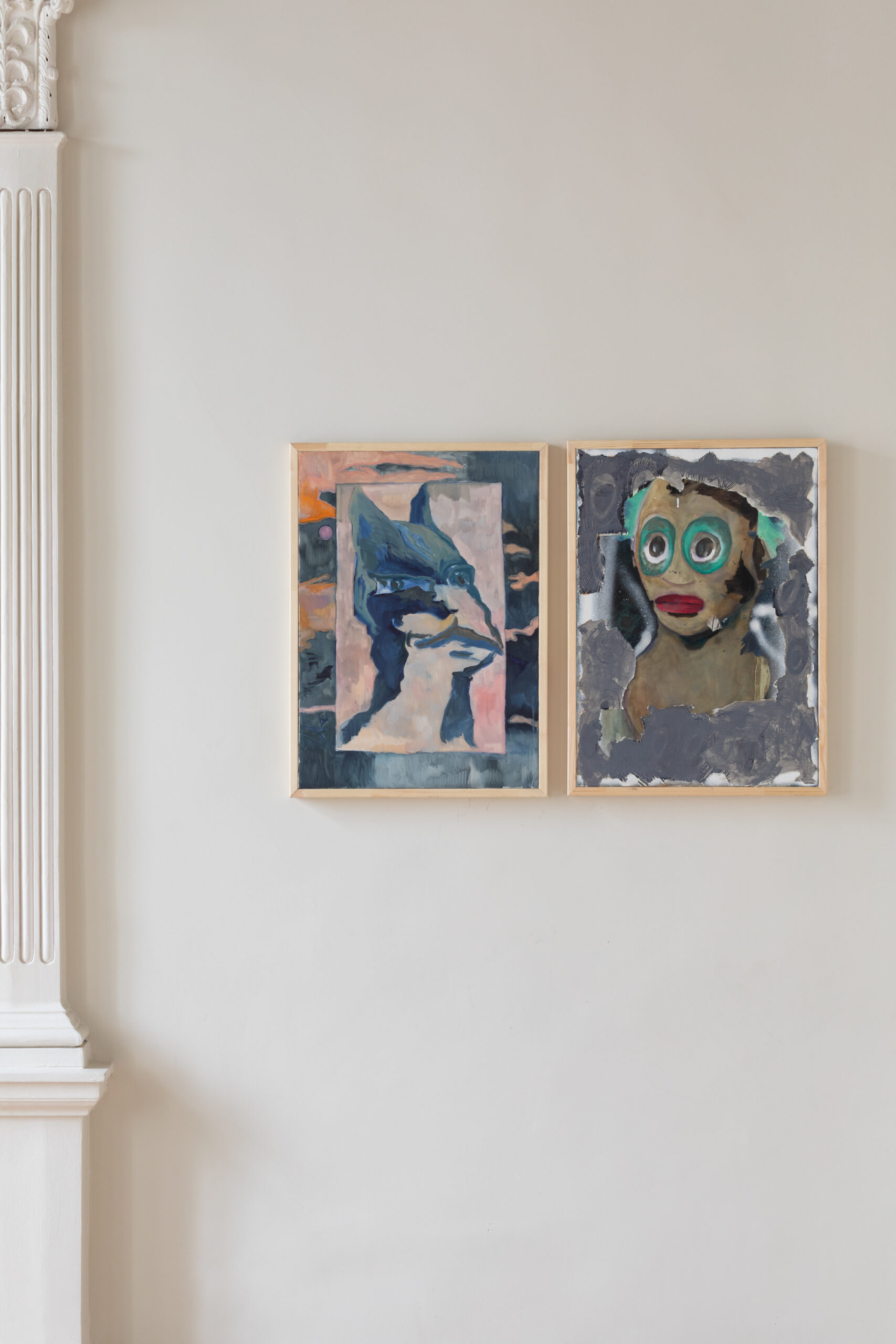
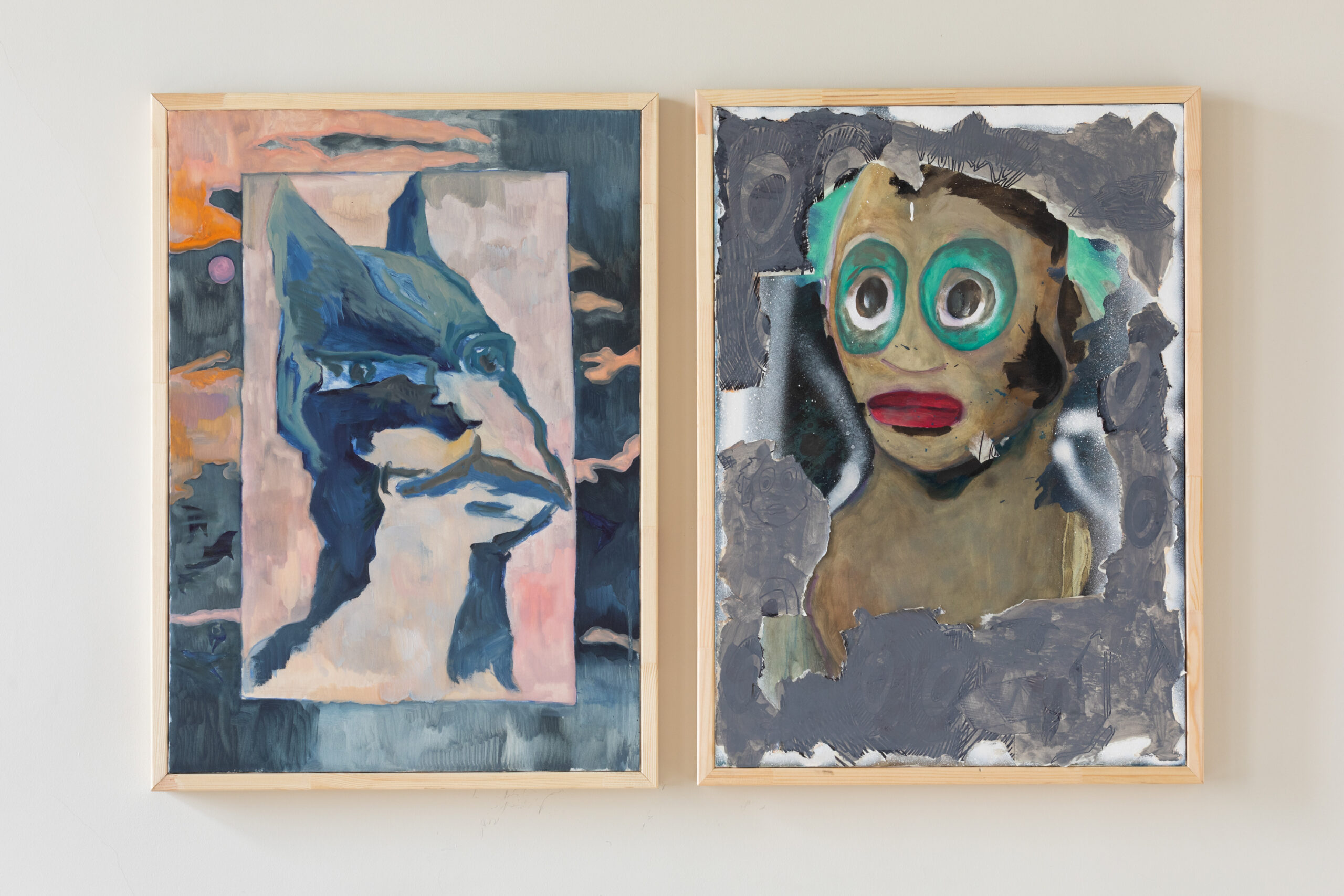
For Kacharava, who studied Fine Art at Tibilisi State Academy of Arts, exploring paleolithic painting techniques has often been an important part of her practice. From her earliest paintings of symbolic masks infused with magic and ritual, to her most recent body of work with remarkably evocative renderings of animals and humans in a complex mix of naturalism and abstraction, Kacharava has constantly looked to the past to comment on self-awareness.
The works in this series are informed equally by the traditional underpinnings of figurative paleolithic art and the unrestrained nature of expressionism’s humanity. Her emotionally charged characters are placed in environments that blend nature with technology in order to address themes of theatrical public-images and humble roots, inviting a broader understanding of contemporary identity. Through colorful figures, Ria has created a myriad of intriguing tableaus and characters that suggest tension between authentic qualities and fabricated behaviors. The lines between gender and species are completely blurred, making the resulting pictorial language welcome the group’s physiological similarities rather than celebrate physical differences.
Among the fantastical and the viable there are also paths that read like directions for guiding the viewer into another world. Given that every viewer imagines something different, each path represents an infinite amount of possible worlds. Themes at the crux of these works is the notion that every work of art exists in the imagination first and last—each beginning in the mind of the artist and continuing in the memory of the viewer. Look closer, and one could also find elements of Helen Frankenthaler, Richard Serra, and Matisse. It is from this modernist sensibility that she draws and expands upon.
Desiree Almodovar